Recent Articles
Popular Makes
Body Types
2020 Volkswagen Atlas Road Test and Review
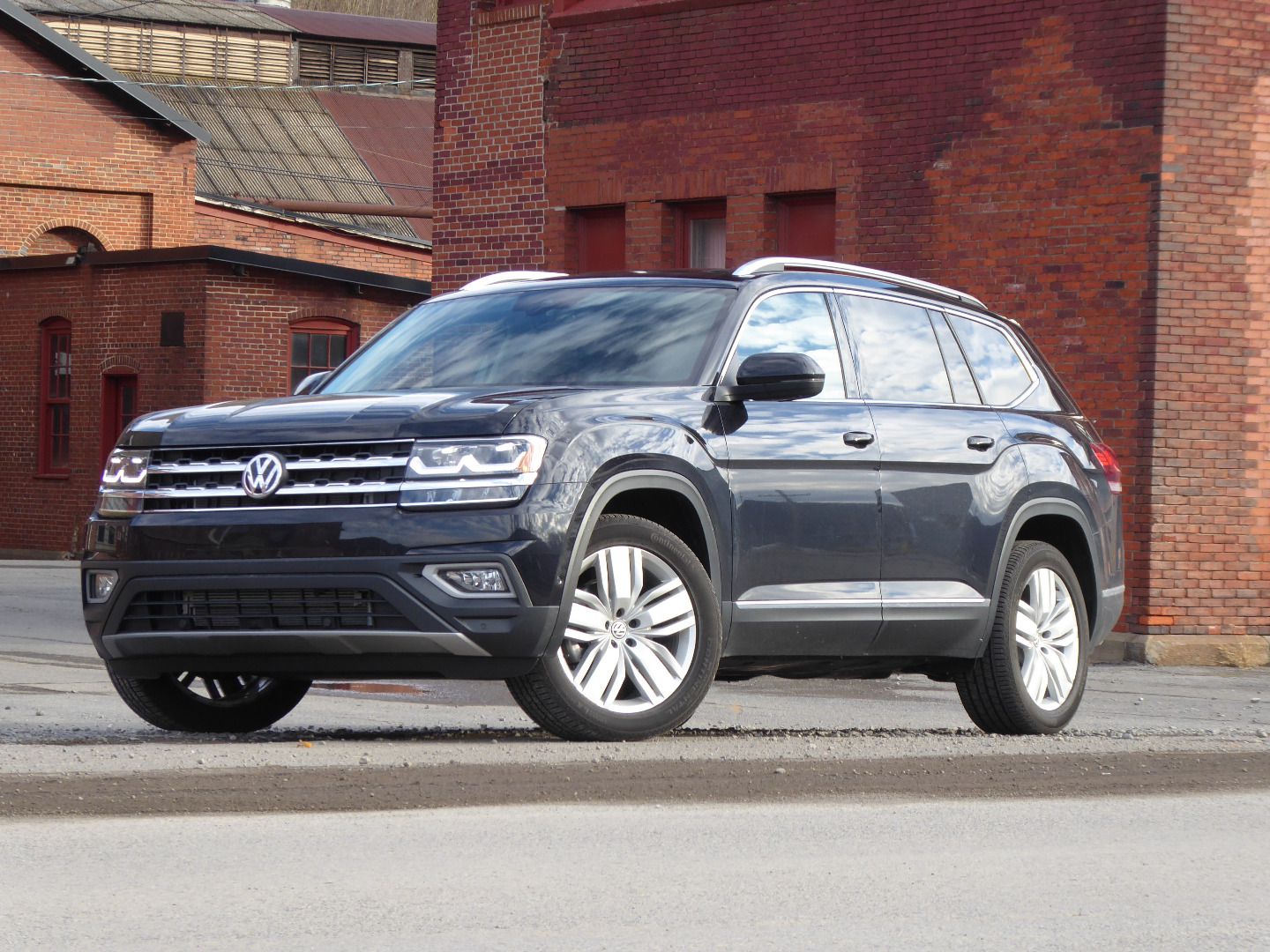
2020 Volkswagen Atlas by Ron Sessions exterior front angle ・ Photo by Ron Sessions
In case you haven’t noticed, a lot of three-row SUVs advertised with seven-passenger carrying ability can't really handle seven adults. Well, the 2020 Volkswagen Atlas is not one of those. Volkswagen’s biggest vehicle is kind of tall and somewhat boxy, which is exactly what you want if the stated goal is to haul seven people and their many possessions in a dignified fashion. The Atlas handles that task with flying colors while managing not to drive like the bus you took to the airport.
The large seven-passenger crossover stretches 198.3 inches stem to stern, about the same size as the Nissan Pathfinder. And unlike the compact Tiguan, the Volkswagen Atlas has an adult-rated third-row seat, offering more third-row headroom and legroom than the Pathfinder or even the slightly larger Chevrolet Traverse. Adding standard in-vehicle Wi-Fi and next-generation Car-Net for 2020, the Atlas lineup (including destination charges) consists of the base S ($32,565), SE ($35,715), SE w/Technology ($38,065), V6-only SE R-Line ($41,665), SEL ($41,815), V6-only SEL R-Line ($45,315), and V6-only 4Motion-only all-in SEL Premium ($50,165).
Two Propulsion Choices
The 2020 Atlas is available with a 2.0-liter turbo four-cylinder or a naturally aspirated 3.6-liter V6. This 2.0-liter, available only with front-wheel drive, may look a bit lost in the huge engine compartment, but keep in mind that this engine comes straight from the spritely Golf R hot hatch. Yes, it’s pulling the weight of a 4,000-lb-plus SUV, but it moves with more spunk than you might think. EPA estimates for the four-cylinder are 20 mpg city/24 mpg highway/22 mpg combined, and it's rated to tow 2,000 lbs. In four days and 350 miles of mostly highway and two-lane back road driving, the trip computer reported 26 miles per gallon.
If you are looking for all-wheel drive or want to tow up to 5,000 lbs, the V6 is the engine of choice. It has more top-end power for bursts around slower vehicles on two-lane roads and merging with freeway traffic. It develops 276 horsepower and 266 lb-ft of torque, albeit at higher rpm than in the four-cylinder. 2020 EPA estimates aren’t available for the V6 yet, but the 2019 model got a 19 mpg combined rating. The Atlas is equipped with an eight-speed automatic transmission with quick and positive shifts.
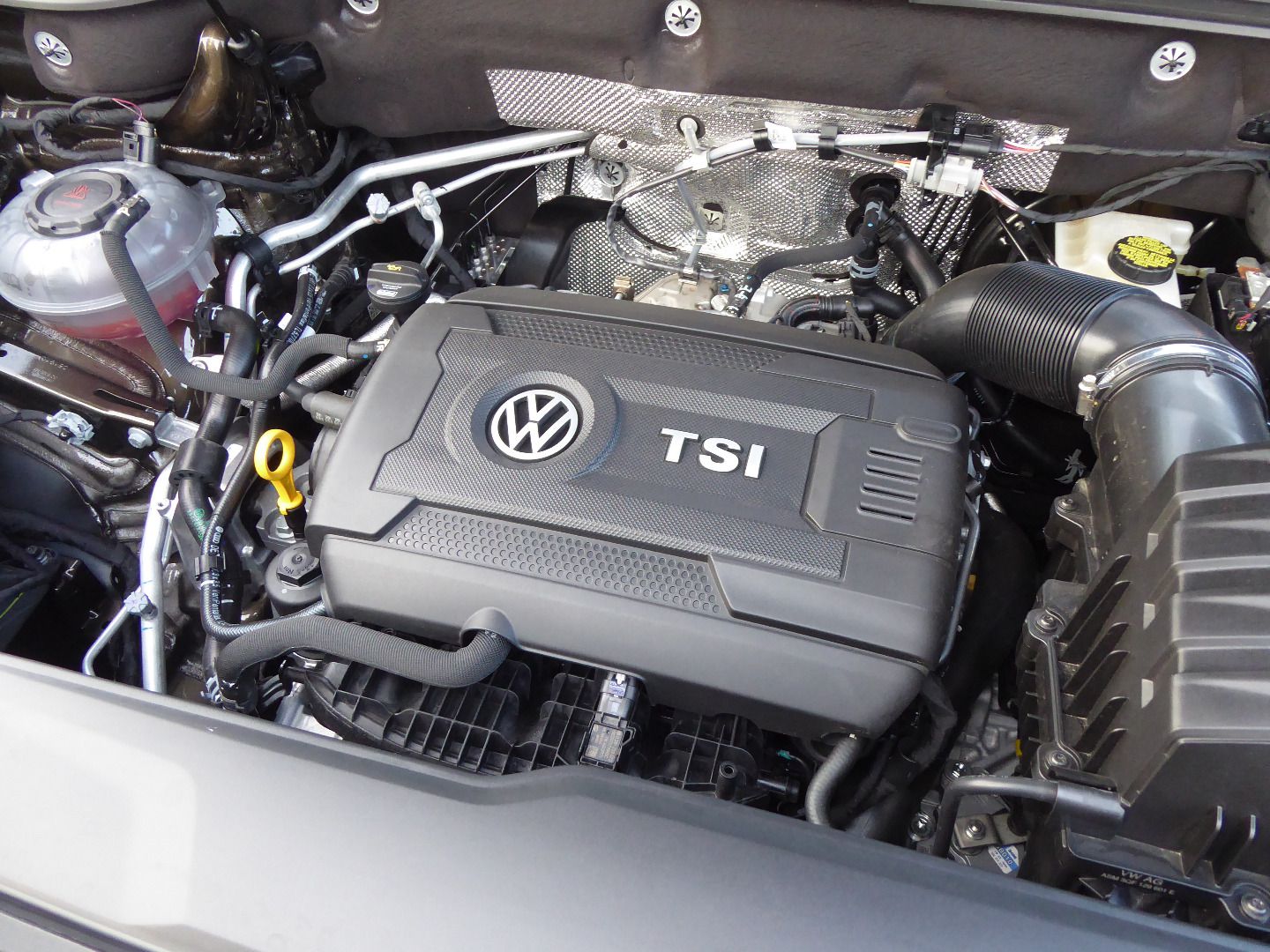
Photo by Ron Sessions
No-Nonsense Cabin
At $32,565 for the base S front-drive model with the 2.0-liter engine, the Atlas is a lot of SUV for the money. So, as long as you don’t expect Audi-esque materials and finishes, it’s all good. The Atlas cabin is quiet and roomy with simple, straightforward control layouts. Yes, there are bits of exposed hard plastic, but what is there is functional and durable.
The front seats are firm yet comfortable, and they can handle a wide variety of body types. Ergonomics are spot on. The base S model has cloth upholstery, the range-topping SEL Premium gets leather seats, and all other trims sport leatherette. All but the S get heated front seats and a power driver’s seat. SEL and higher trims add driver-seat memory and a power front-passenger seat. Only the SEL Premium comes with ventilated front seats. Small-item storage is ample courtesy of an open bin forward of the shifter plus a deep, covered bin beneath the center armrest. The Atlas allows the driver good overall outward visibility, thanks to large windows and relatively thin windshield posts.
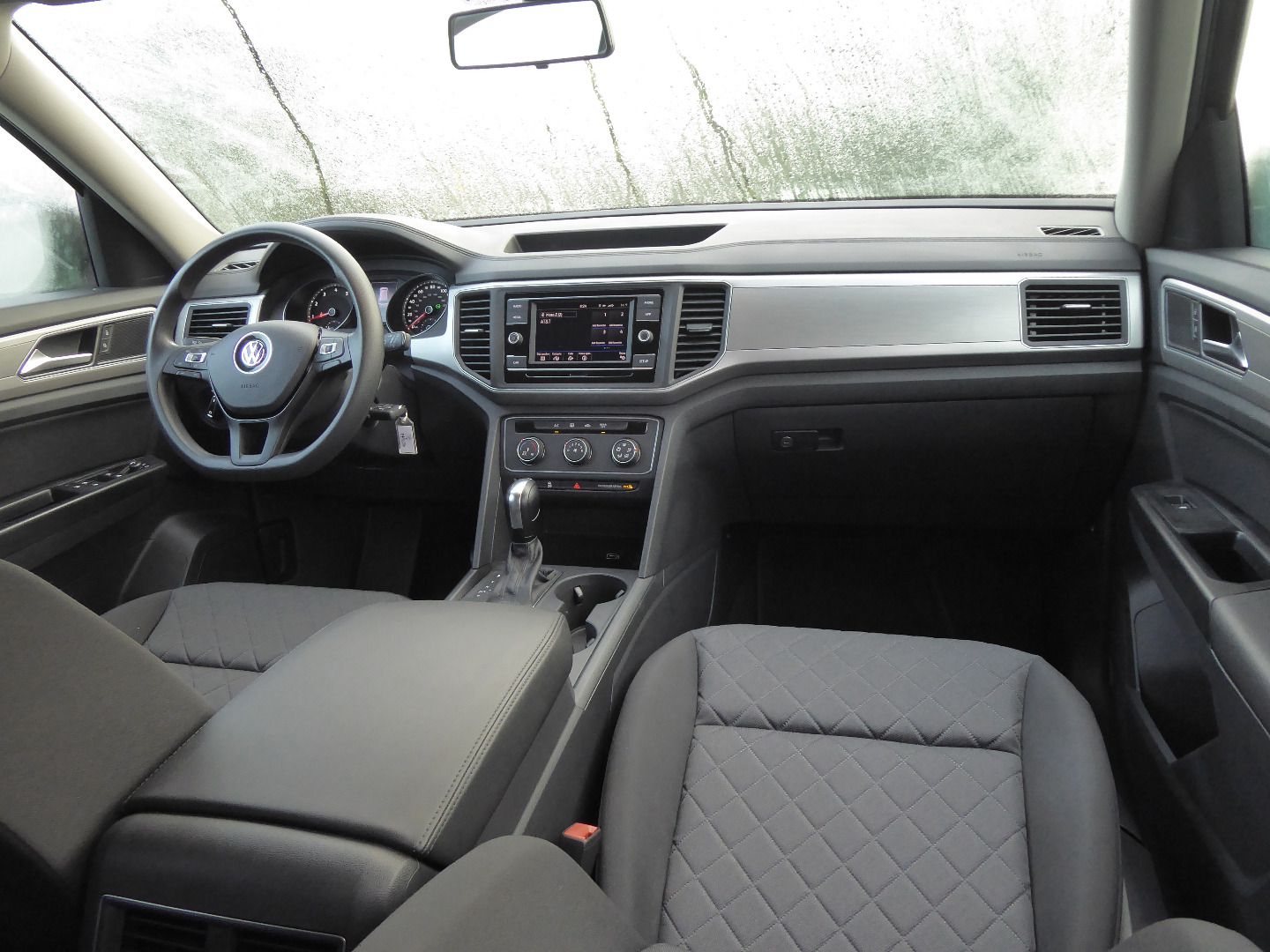
Photo by Ron Sessions
Tunes, Maps, and Stuff
The big news for the 2020 Atlas is the addition of an in-vehicle Wi-Fi hot spot plus Volkswagen's next-generation Car-Net telematics system. The base S model still comes with a dated-looking 6.5-inch infotainment display flanked by hard buttons and just one USB port — but a clear, bright, easy-to-navigate 8-inch infotainment touchscreen and three USB ports are standard in all higher trims. Bluetooth, a backup camera, and Apple CarPlay and Android Auto compatibility for your cellphone are all standard.
As for tunes, the standard audio fare is a workaday six-speaker AM/FM/CD stereo with HD radio and SiriusXM on all but the top-of-the-line SEL Premium model. It gets a rich-sounding 12-speaker Fender premium system. Embedded navigation is included starting at the SEL trim level.
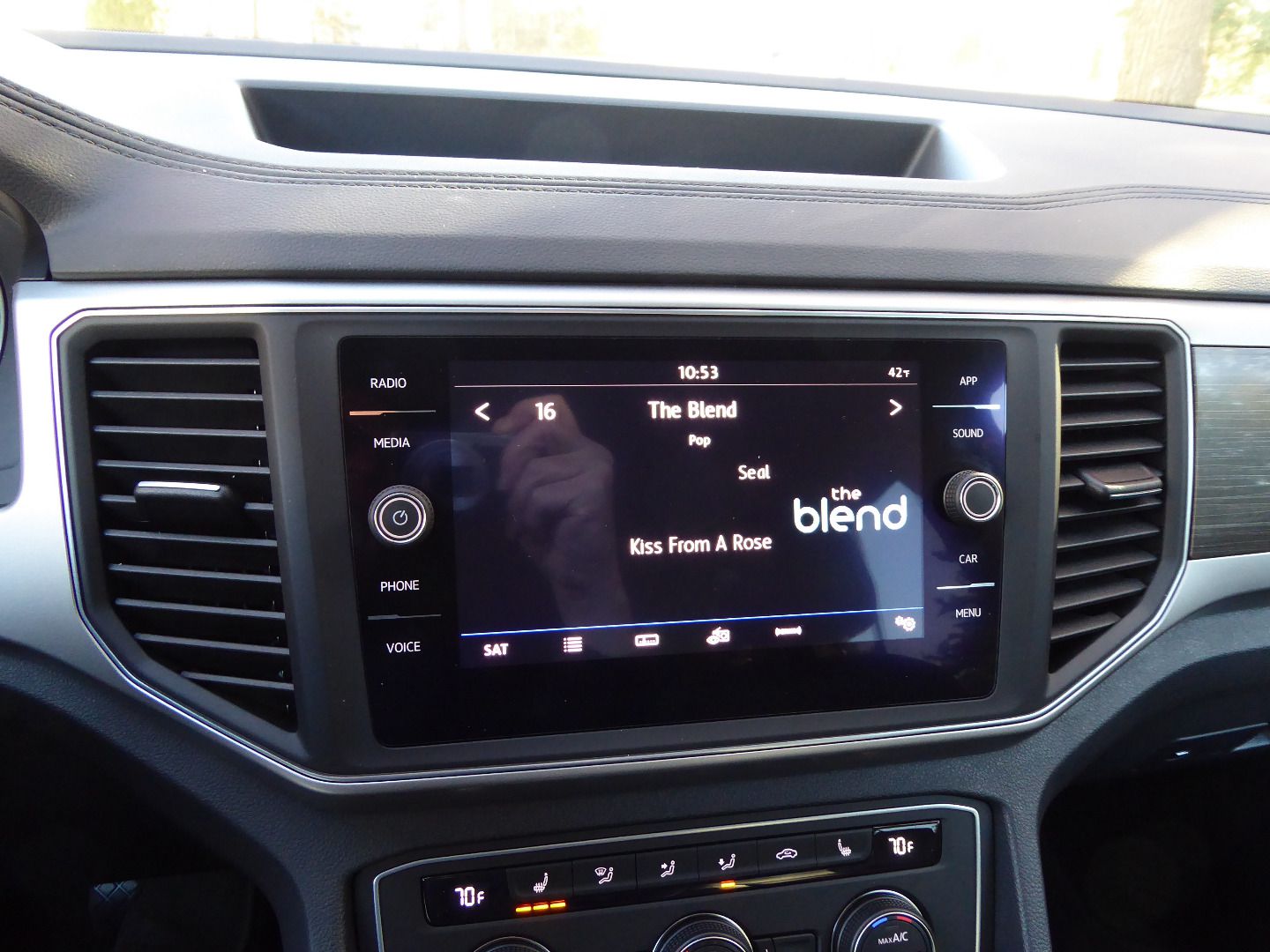
Photo by Ron Sessions
Roomy Second Row
The standard rear bench seat can accommodate three adults shoulder to shoulder with impressive headroom and legroom. The second-row bench seat is split 60/40, and the two seatbacks can recline individually up to 14 degrees. A fore-aft slide feature gives 7.7 inches of room to settle any possible territorial disputes between the second- and third rows.
Manual pull-down rear-door sunshades in SE and higher trims keep outboard passengers from getting too much Vitamin D. Heated outboard rear seats cheer the range-topping SEL Premium. Individual captain’s chairs and six-passenger seating are an option in Atlas SE w/Technology and higher trims, replacing the standard 60/40 second-row bench. Second-row passengers get their own climate-control panel on the rear of the center console.
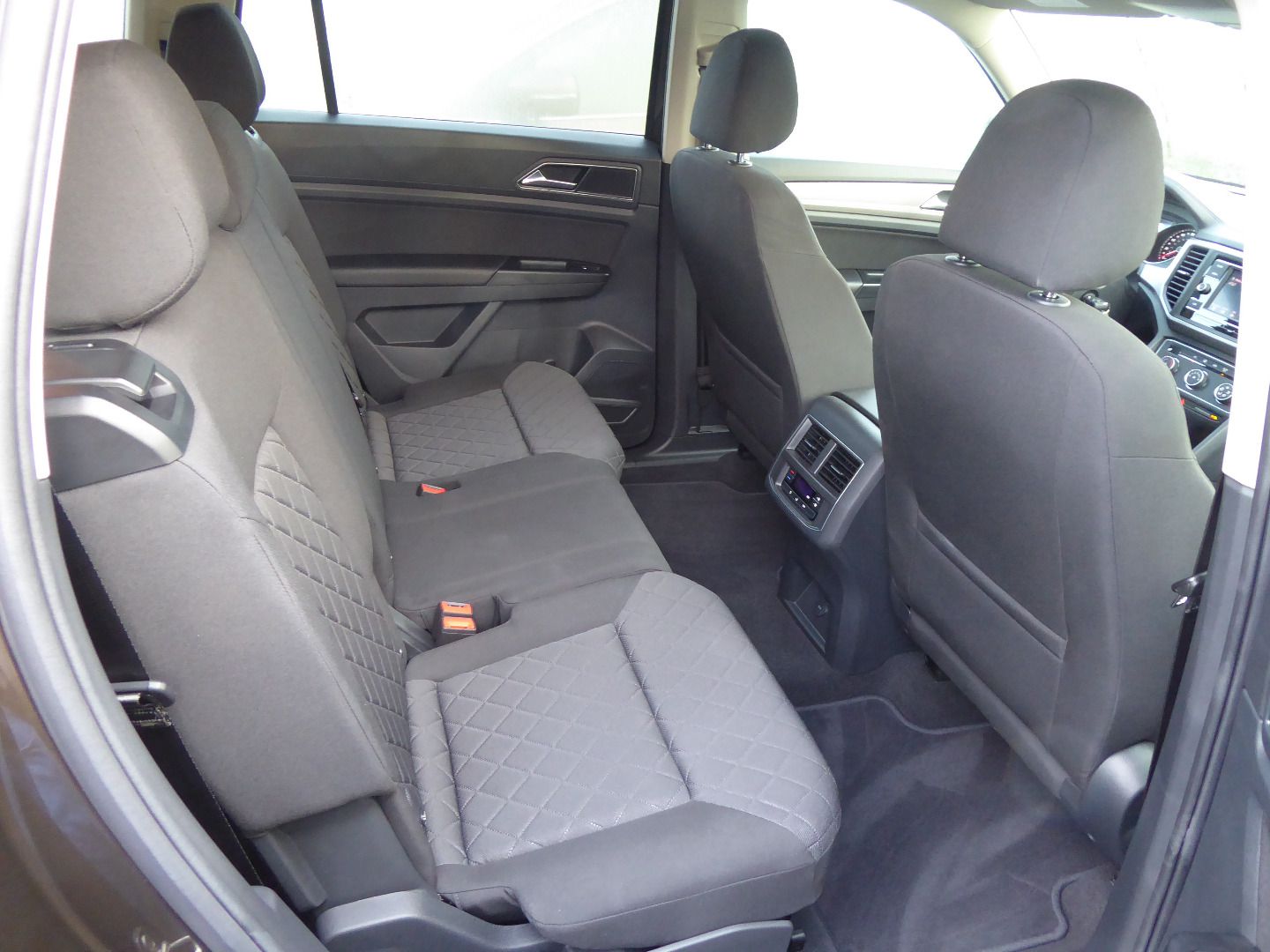
Photo by Ron Sessions
Adult-Approved Third Row
In its standard configuration, the 2020 Volkswagen Atlas is a true seven-passenger SUV that can carry seven full-grown adults with dignity, something that can’t be said for most similarly three-row SUVs — whose rearmost chairs are suitable only for children.
The Atlas' third-row seatback is split 50/50 for situations requiring room for six adults and longer cargo. The standard second-row bench seats have a one-handle tilt-and-slide feature that opens up space for easy third-row access, and it does do without the need to remove any child safety seats.
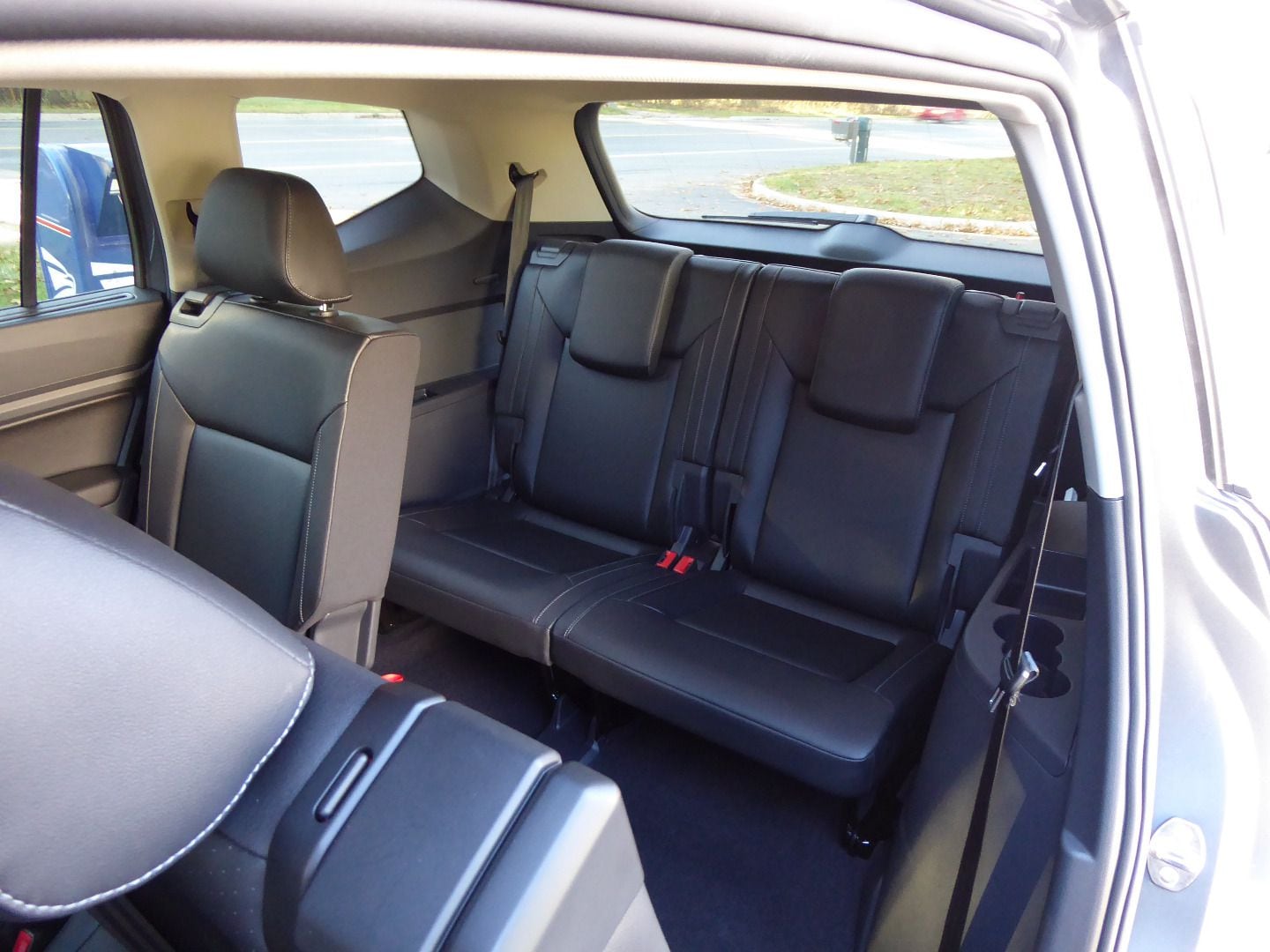
Photo by Ron Sessions
Stuff Storage
Just as the made-in-Chattanooga Atlas offers surprising, adult-friendly roominess for its passengers, Volkswagen’s largest SUV features a tall and wide cargo hold that’s optimized for the big stuff Americans tend to carry. Even though the Atlas is half a foot shorter in length than the competing Chevrolet Traverse crossover, there’s a full-size-sedan-like 20.6 cubic feet of space behind the VW's third-row seat. That increases to 96.8 cubic feet with the second- and third-row chairs folded flat, which is more storage than offered in the full-size Chevrolet Tahoe SUV.
Access to the cargo hold is via a manually operated liftgate on S and SE models, upgrading to a power-operated one on SE models with the Technology package. A hands-free liftgate, opened with a foot gesture under the rear bumper, comes with all SEL trims along with the SE R-Line.
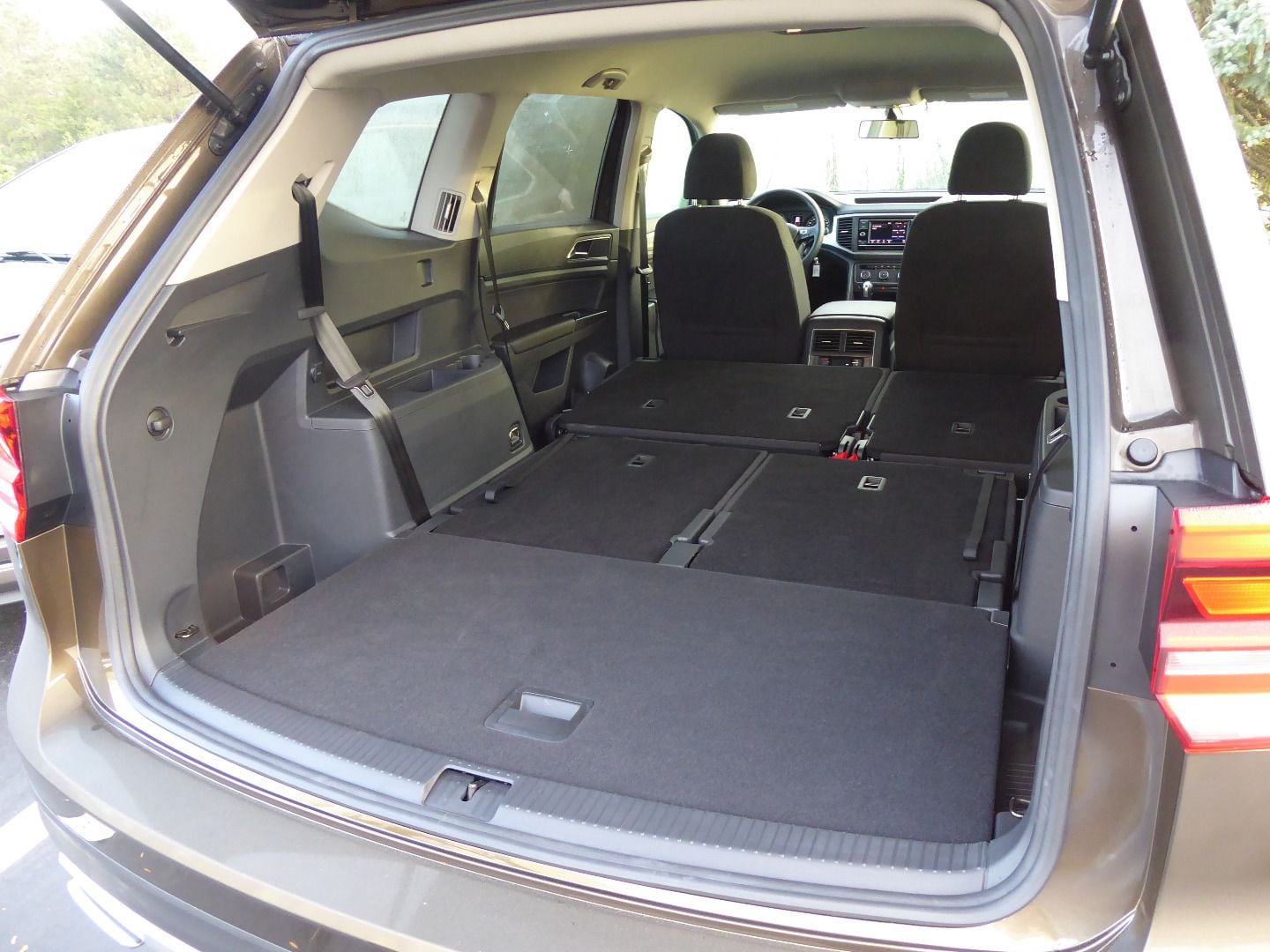
Photo by Ron Sessions
Safety and Driver-Assistive Systems
As with most popularly priced offerings these days, the 2020 Atlas comes with a wide roster of safety and driver-assistive systems, many of them standard. All Atlas models include a forward-collision warning with pedestrian detection and automatic emergency braking. That’s bolstered with blind-spot and rear cross-traffic alert systems, items that often cost extra in competing models. Moving up to the midlevel SE w/Technology model adds adaptive cruise control, lane-keep assist, and an active blind-spot monitor that can actually make small steering corrections should you not heed the system’s warnings. The lane-keep assist can be annoying, as it increases steering effort to keep you in your lane between the lines if you, say, swing wide to give a jogger or bicyclist more space. You can switch off this feature if you want using the dashboard touchscreen and steering-wheel buttons.
Moving up to the SE R-Line adds park distance control, which beeps with increasing intensity the closer the VW gets to an obstacle. The range-topping SEL Premium brings automatic high beams, a 360-degree overhead-view camera to replace the standard backup camera, and a park assist feature that can steer the SUV in and out of a parallel parking space.
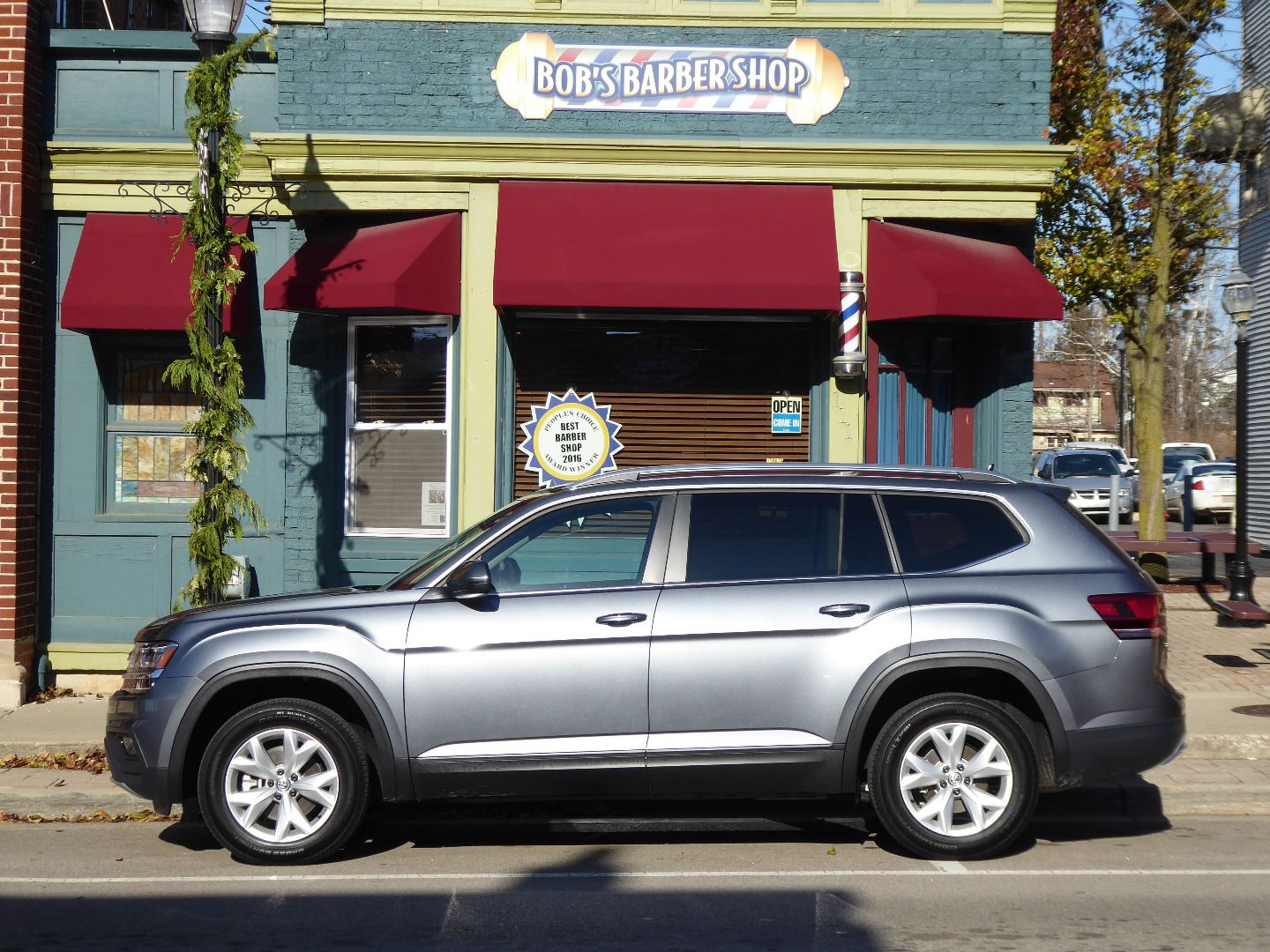
Photo by Ron Sessions
Actually Fun to Drive
Despite its commodious interior and cargo hold, the Atlas drives way smaller than it is. VW’s stiff MQB architecture provides a solid basis for the Atlas’s chassis hardware. Ride motions are fairly supple with good body motion control over undulating road sections. The big Volkswagen corners without much body lean. Road impacts are mostly taken in stride, although there are some hollow “lumber” sounds on hard jolts from the front struts.
Steering effort is pleasantly light, but reasonably communicative as to what the front tires are doing. And it’s very precise, tracking straight and true on the highway, and making it easy to place the Atlas exactly where you want to without constantly having to make mini corrections. Beefy four-wheel disc brakes deliver confidence-inspiring stopping power and fade-free performance. Top-of-pedal response is reassuringly crisp, and it’s easy to modulate the binders for pinpoint control. Even the little four-cylinder engine keeps things lively; its intake tract growls enthusiastically under acceleration, and the turbocharger spools up with no lag. It develops 258 lb-ft of torque at a just-above-fast-idle 1,600 rpm, so tip-in response is good even at low-rpm part throttle when just cruising around town.
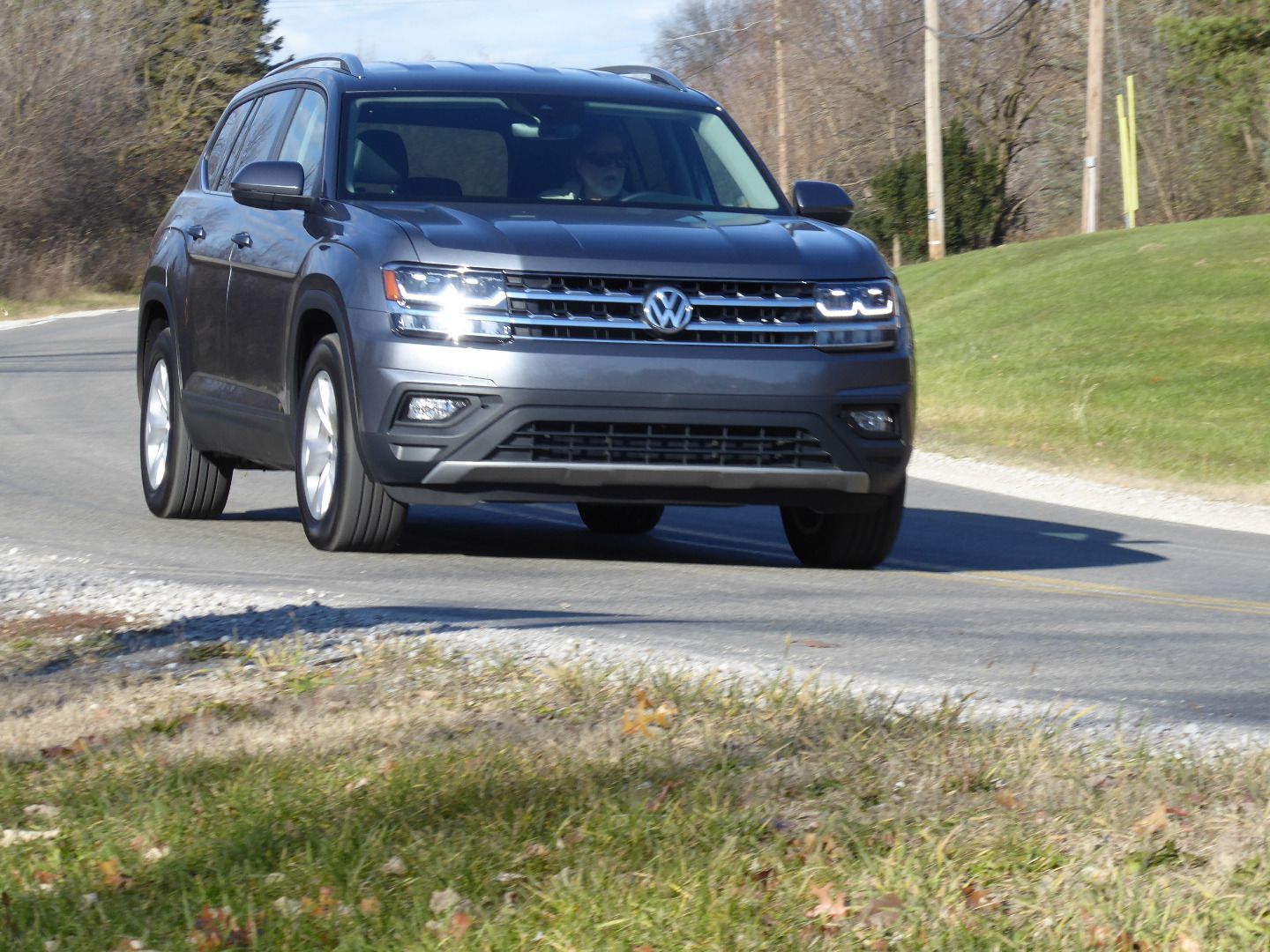
Photo by Ron Sessions
European Flavor, American Value
Volkswagen’s biggest SUV continues to roll with tons of room and value for the dollar. It’s a good proposition for families looking for the spread-out room of a big SUV and driving dynamics of a European-bred chassis without the high cost associated with a European brand.
Do note that Volkswagen’s former six-year/72,000 bumper-to-bumper warranty, which it instituted after the company’s diesel emissions scandal, is no longer being offered. It’s been replaced with a more customary four-year/50,000-mile bumper-to-bumper warranty that’s also transferable to subsequent owners.
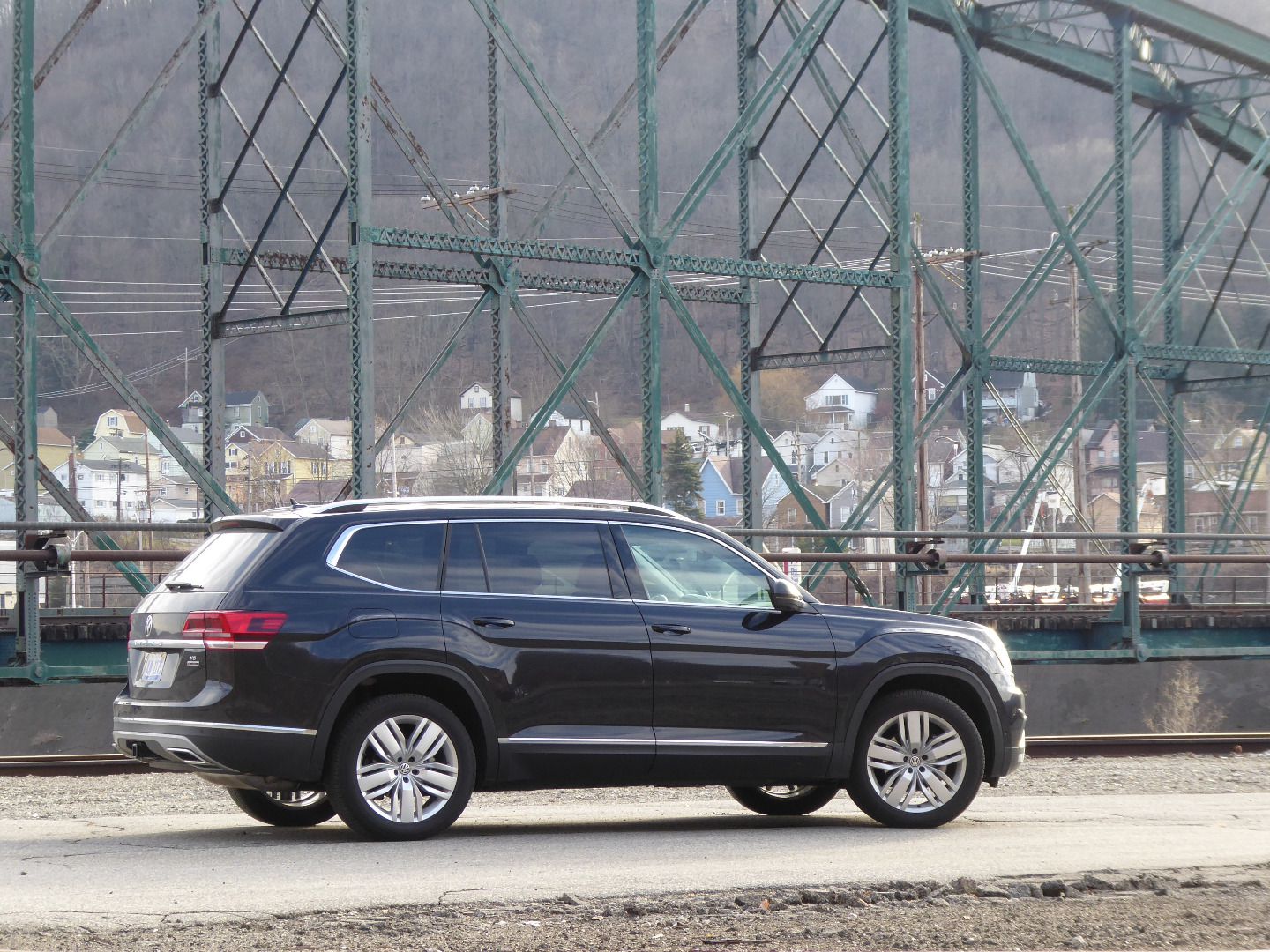
Photo by Ron Sessions